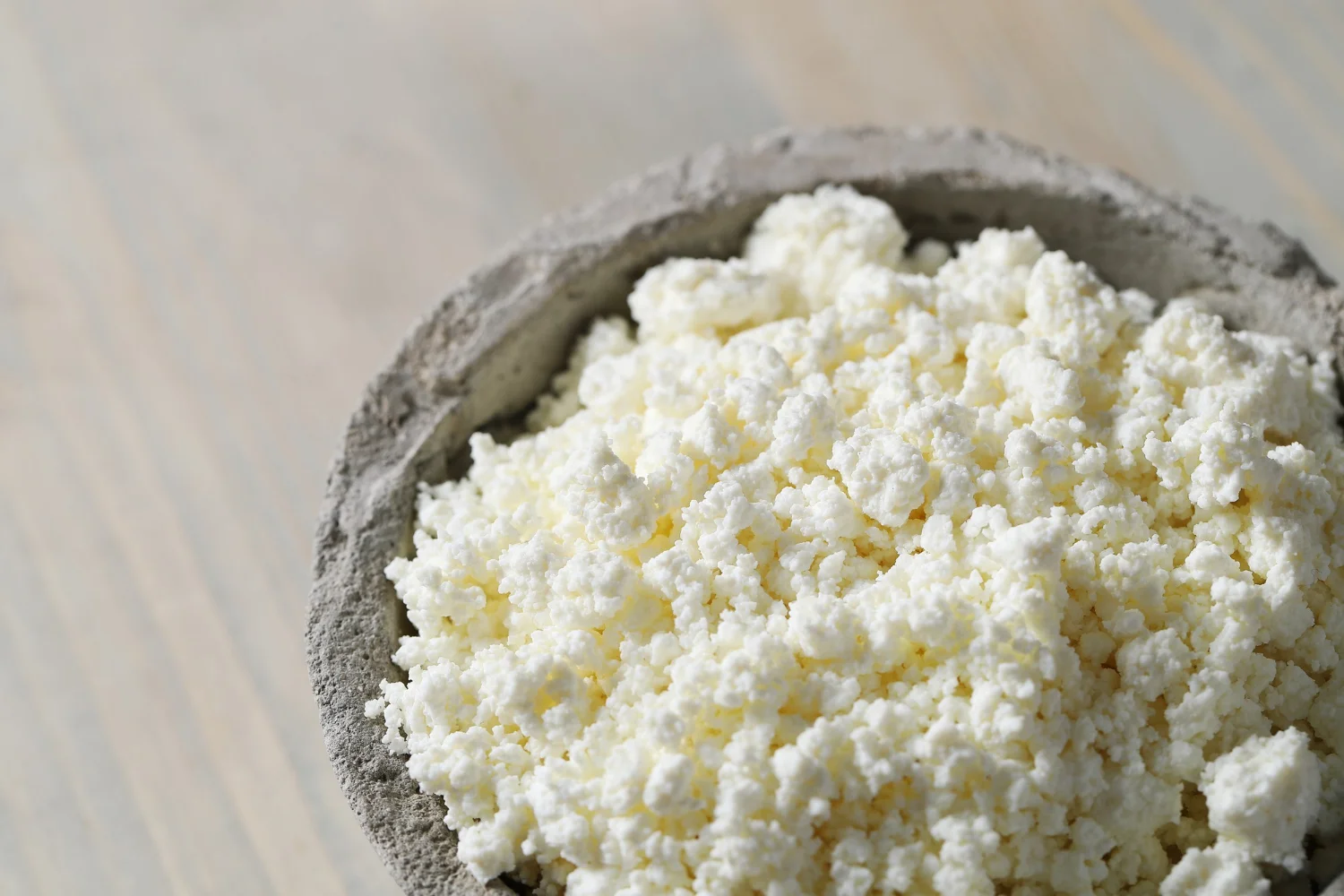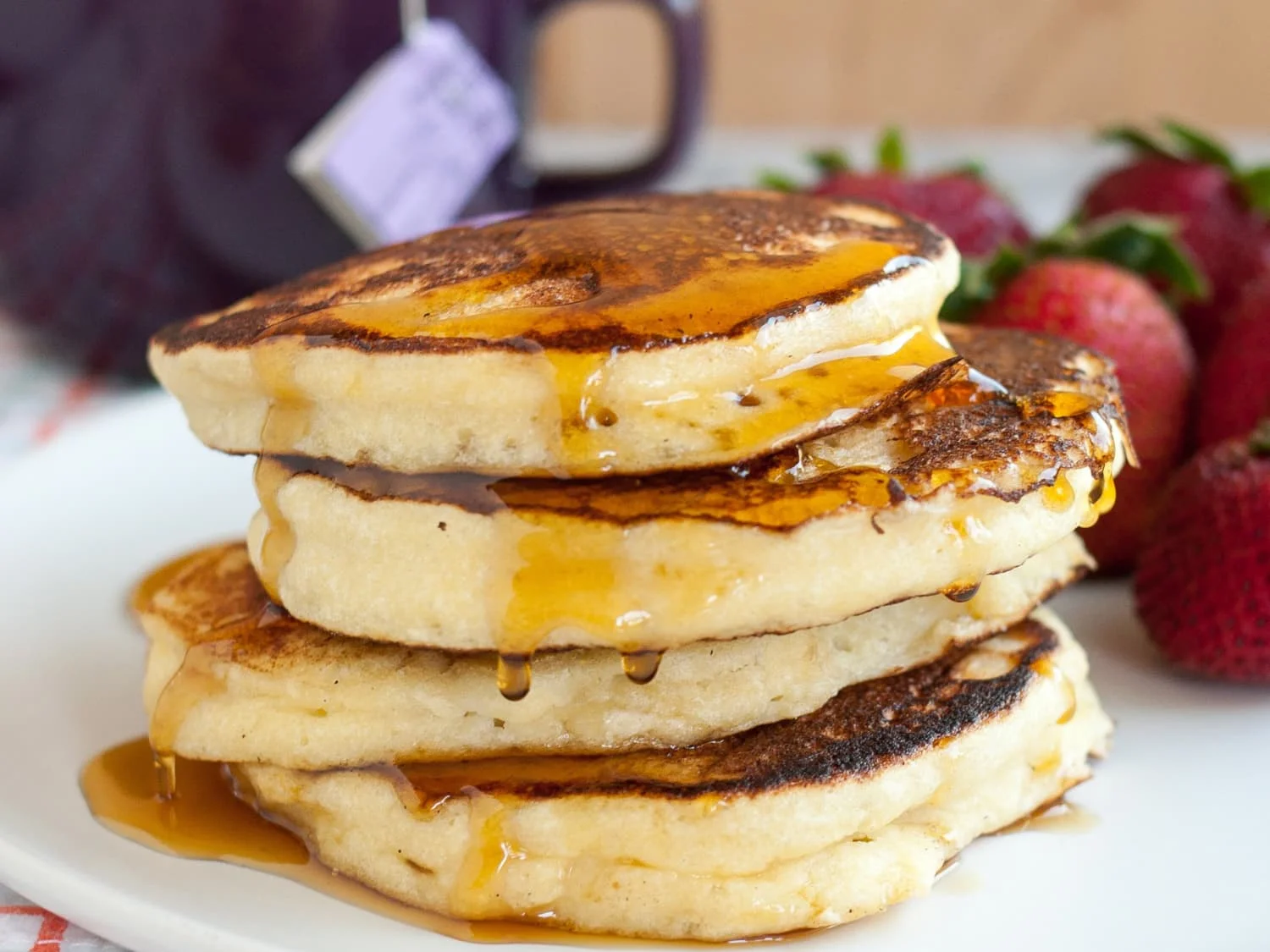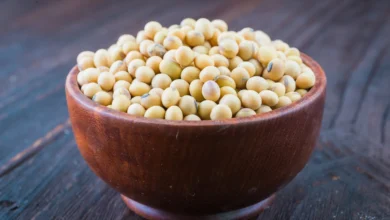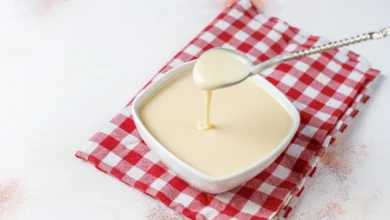Freezing Ricotta: The Do’s and Don’ts
Have you ever wished your creamy, luscious ricotta cheese could magically last longer? Well, get ready to transform your kitchen into a cheese preservation wonderland! By harnessing the power of your freezer, you can extend the life of your beloved ricotta and unlock a world of culinary possibilities.
While it might sound unconventional, freezing ricotta is a simple yet effective way to combat food waste and ensure you always have this versatile ingredient at your fingertips. Let’s delve into the secrets of freezing ricotta cheese like a pro.
Contents
- Can You Freeze Ricotta Cheese
- Can You Freeze Ricotta Cheese? Yes, but…
- Potential Drawbacks of Freezing Ricotta Cheese:
- Storing Ricotta for Later
- Choosing the Right Ricotta for Freezing: Fresh is Best!
- How to Freeze Ricotta Cheese
- Alternative Freezing Methods for Ricotta
- Storage Duration of Frozen Ricotta Cheese:
- Freezing Homemade Ricotta: Tips for Freshly Made Cheese
- Tips and possibilities
- How Long Does it Last Refrigerated?
- Why You’ll Love Freezing Ricotta
- When to Use Frozen Ricotta Cheese
- How to Defrost Ricotta Cheese
- Better Ways to Use Ricotta Cheese Before It Expires
- Freezing Cheese: Ricotta vs. the Rest
- Fluffy Ricotta Pancakes
- Ingredients
- Directions
- Notes
- Ricotta Substitutes
- More Types of Ricotta
- Health Benefits of Ricotta Cheese
- Frequently Asked Questions
- Can you refreeze thawed ricotta?
- Can ricotta be frozen in glass jars?
- Can I freeze ricotta dip?
- Can you freeze ricotta cheese in the microwave?
- Can you freeze ricotta cheese in the fridge?
- Can you freeze ricotta cheese mixture?
- How long does fresh ricotta last?
- Why don’t some dairy products freeze well?
- Can I freeze dishes that include ricotta cheese?
- What about cottage cheese? Can I freeze cottage cheese?
- How is ricotta made?
- Can I freeze ricotta longer than 3 months?
- Can you freeze ricotta cheese mixture?
- How do I thaw frozen ricotta?
- Can you freeze ricotta cheese in its original plastic tub?
- What is the best way to freeze ricotta?
- Why does ricotta say do not freeze?
- How do you preserve ricotta cheese?
- How long does ricotta last in the fridge?
Can You Freeze Ricotta Cheese
Let’s be honest – those of us who love whipping up a delectable lasagna or a rich pasta bake often end up with leftover ricotta cheese. And while it’s delicious, this Italian cheese doesn’t last forever. Instead of letting it go to waste, why not pop it in the freezer?
Can You Freeze Ricotta Cheese? Yes, but…
While you can technically freeze ricotta cheese, it’s not always advisable. Why? Here’s where things get a bit cheesy (pun intended!).
It’s all about the texture: Fresh ricotta has that beautiful, creamy texture we all love. One of the main questions about freezing ricotta is, “What happens to its texture?” Freezing ricotta is possible, but it’s important to be aware of a subtle change. Ricotta has a naturally high moisture content. When frozen, that water forms ice crystals. While flavor is largely preserved, thawing can leave the ricotta slightly grainier or crumblier than its fresh, creamy state.
Important Note: This change in texture doesn’t mean your ricotta is ruined! Frozen and thawed ricotta still has plenty of culinary uses.
Potential Drawbacks of Freezing Ricotta Cheese:
While freezing ricotta cheese is a convenient way to extend its shelf life, it’s important to be aware of potential changes:
Texture: The most noticeable change is a shift in texture. Ricotta’s smooth, creamy consistency can become slightly grainy or watery upon thawing. This is due to the formation of ice crystals, which disrupt the cheese’s delicate structure.
Usage: Frozen and thawed ricotta may not be suitable for all recipes. While it’s fine for cooked dishes like lasagna or stuffed shells, it might not be ideal for recipes where a smooth texture is essential (e.g., cheesecakes or dips).
Mitigation:
- Freezing Method: Freezing ricotta in smaller portions (e.g., ice cube trays or small containers) can help minimize texture changes.
- Thawing: Thawing ricotta slowly in the refrigerator allows it to reabsorb some moisture, potentially improving texture.
Storing Ricotta for Later
- Container is key: If you’ve bought a tub of ricotta and know you won’t use it all, freeze it directly in the original container if possible. Otherwise, a freezer-safe airtight container will protect it from freezer burn.
- Portion control (optional): For smaller amounts of leftover ricotta, divide into individual portions for easier thawing and use.
- The deep freeze: If you’re planning on storing it for an extended period, consider a deep freeze for the best results.
Remember: Frozen and thawed ricotta is best in those cozy baked dishes, sauces, and anything where its slightly altered texture won’t be center stage.
Choosing the Right Ricotta for Freezing: Fresh is Best!
Not all ricotta is created equal when it comes to freezing. Fresh ricotta, the kind you typically find in plastic tubs, is your best bet for freezing. It has a high moisture content and minimal added ingredients, making it less prone to undesirable texture changes after thawing.
On the other hand, flavored ricotta (like lemon or herb varieties) or aged ricotta (like ricotta salata) may not fare as well in the freezer. Their added ingredients or drier texture can become separated or grainy when frozen and thawed.
If you’re unsure which type you have, check the label or ask your cheesemonger for guidance before freezing.
How to Freeze Ricotta Cheese
Want that tasty cheese ready for your next lasagna adventure? Freezing ricotta is simple, and here’s how to do it right:
Prepare the cheese for freezing:
- Stir: Give the ricotta a good stir to help distribute the moisture evenly before freezing.
- Divide (if needed): If you have a large amount or know you’ll want to use it in smaller quantities, divide your ricotta into appropriate serving sizes. This avoids the need to re-freeze thawed cheese.
Package for protection:
- Unopened: If the ricotta is unopened, you can often freeze it directly in the original packaging.
- Opened: Transfer the ricotta into a sealed, freezable container with as little air as possible, or wrap it tightly in plastic wrap followed by a freezer-safe plastic bag.
Mark (and suck):
- Use by date: Use a permanent marker to label the ricotta with a “use by” date that is up to 2 months in the future.
- Bag method (optional): If using a plastic bag, partially seal the bag then use a straw to suck out all remaining air before sealing completely.
Freeze: Place your packaged ricotta cheese in the freezer, and let it work its magic. It can keep for up to 2 months when frozen properly.
Alternative Freezing Methods for Ricotta
Ice Cube Trays: Portion Perfection
Freezing ricotta in ice cube trays is a game-changer for those who use smaller amounts at a time. Simply spoon the ricotta into the tray, freeze, and then pop out the cubes as needed. This method prevents waste, allows for gradual thawing, and makes it easy to incorporate ricotta into smoothies, sauces, or other dishes.
Vacuum Sealing: The Preservation Pro
For the serious ricotta enthusiast or those with a vacuum sealer, this method offers superior protection against freezer burn and flavor loss. By removing air before freezing, vacuum sealing helps maintain the cheese’s texture and taste for an even longer period. However, this is optional, and standard freezing methods work well too!
Storage Duration of Frozen Ricotta Cheese:
The general guideline for storing frozen ricotta is:
- Freezer: Ricotta cheese can be stored in the freezer for up to 2-3 months for best quality.
- After Thawing: Once thawed in the refrigerator, use it within 3-4 days.
Important Note: It’s not recommended to refreeze ricotta cheese once it has been thawed, as this can further degrade the texture and increase the risk of bacterial growth.
Freezing Homemade Ricotta: Tips for Freshly Made Cheese
Homemade ricotta offers a unique, fresh flavor that’s hard to beat. If you find yourself with a surplus from your cheesemaking adventures, the freezer is still an option! Here’s what you need to know:
- Moisture Management: It’s essential to drain homemade ricotta as thoroughly as possible before freezing. Gently press the curds in a cheesecloth-lined sieve to remove excess liquid.
- Careful Packaging: The delicate texture of homemade ricotta can be more susceptible to ice crystal damage during freezing. Wrap it tightly in parchment paper followed by plastic wrap to provide an extra layer of protection.
- Expect Some Change: Homemade ricotta has a high water content, so some graininess upon thawing is to be expected. However, you can still enjoy the delicious flavor in all your favorite cooked recipes!
Tips and possibilities
Freezing is an excellent way of preserving fresh food and reducing food waste. Beyond your delicious ricotta, here’s a quick look at what else works wonderfully in the freezer:
- Vegetables: Many vegetables freeze well with a bit of preparation. Think broccoli, spinach, kale (note: lettuce is an exception), onions, carrots, celery, cabbage, green beans, eggplant, zucchini, corn, potatoes, mushrooms, asparagus… the list goes on! Just remember, blanching some vegetables before freezing helps retain their vibrant color and texture. (Note: cucumber, garlic, avocados, and tomatoes are generally not ideal for freezing).
- Fruits: Berries like grapes, apples, lemons, strawberries, peaches, and blueberries all freeze beautifully for later use in smoothies, desserts, and more. Bananas also freeze well, especially for baked goods and smoothies.
- Dairy products: It’s not just ricotta – cheese lovers can freeze other varieties like mozzarella, and even milk, heavy cream, sour cream, yogurt (particularly Greek yogurt), butter, cream cheese, and cottage cheese.
- Prepared foods and leftovers: From rice and pasta to guacamole, tortillas, quiche, and dips like harissa hummus, freezing can extend the life of many delicious prepared dishes.
Important: Always research the best freezing methods for specific foods, as some require pre-processing for optimal results!
How Long Does it Last Refrigerated?
- Unopened ricotta cheese: A sealed container of ricotta cheese can typically last for several weeks in the refrigerator, even past the “best used by date” on the package. However, always use your senses – give it a smell and look for any signs of mold before using it even if the date looks okay.
- Opened ricotta: Once you’ve cracked open that container, I recommend to use ricotta within 5 to 7 days. Bacteria love those creamy curds, so prompt storage and usage are key for freshness!
Why You’ll Love Freezing Ricotta
Sometimes, even the best-laid plans leave you with leftover ricotta. Or maybe you stumbled upon that tub of ricotta on sale and couldn’t pass it up. Whatever the reason, freezing lets you stretch your cheese budget and reduce food waste – that’s always a win!
Let’s not forget the unique appeal of ricotta itself. This fresh cheese of Italian origin is traditionally made from whole or skim cow’s milk. The word ‘ricotta’ literally means ‘cooked twice’, referring to its creation from the whey leftover during cheese making. This process contributes to its delicate, subtly sweet flavor and irresistible smooth texture. Unfortunately, that high moisture content we love so much is also what makes freezing tricky. But don’t worry – frozen and thawed ricotta still has a place in your kitchen!
READ: Caramelized Onion Confit and Ricotta on Crostini
When to Use Frozen Ricotta Cheese
Fear not, there are still plenty of delicious uses for frozen ricotta cheese! The key is choosing recipes where the textural change is less noticeable:
- Baked and cooked recipes: Think classic lasagna, stuffed shells, rich sauces, dips, and even cheesy bread fillings. The cooking process helps disguise any slight graininess.
- Pancakes, muffins, and more: Frozen ricotta can add a delightful moistness and richness to baked goods.
However, if you’re hoping to freeze slices of an already-baked ricotta cheesecake, the results may be disappointing. The textural change from freezing and thawing will be far more noticeable compared to using the frozen cheese in a cooked recipe.
How to Defrost Ricotta Cheese
The key to successfully using frozen ricotta cheese is proper defrosting. Remember, when frozen, ricotta separates into liquid and cheese elements. Here’s how to re-integrate the texture:
- The refrigerator is your friend: The safest and best method is to defrost ricotta cheese slowly in the refrigerator. This usually takes 24-36 hours. Never defrost cheese at room temperature, as this increases the risk of bacteria growth.
- Once thawed, give it a mix: Place the thawed ricotta in a bowl and stir it to help combine the liquid and solids. Understand that even with careful defrosting, frozen ricotta tends to have a slightly grainier consistency than its original fresh texture.
Better Ways to Use Ricotta Cheese Before It Expires
Got unopened ricotta cheese with a looming “best used by date”? Before freezing, consider these tasty recipes – they’re the perfect way to celebrate this fresh Italian cheese!
- Lemon Ricotta Pancakes: Give your breakfast a fluffy upgrade with these zesty pancakes.
- Whipped Ricotta: Transform ricotta into a luxurious spread or dip, perfect for crostini or toast.
- Lemon Ricotta Pasta: A quick and bright pasta dish that showcases the delicate flavor of ricotta.
- Ricotta Pizza: Swap out the usual tomato sauce for a creamy, cheesy ricotta base.
Freezing Cheese: Ricotta vs. the Rest
Understanding the nuances of freezing different cheeses can help you preserve their flavors and textures effectively. Here’s a quick comparison:
| Cheese | Freezing Suitability | Texture Changes After Thawing | Thawing Method | Best Use After Thawing |
|---|---|---|---|---|
| Ricotta | Good (Fresh) | Slight graininess | Slow in refrigerator | Cooked dishes |
| Mozzarella | Moderate (Shredded) | May become rubbery | Submerge in warm water | Pizza (may require stretching) |
| Cheddar | Excellent (Block/Shredded) | Minimal impact | Slow in refrigerator | Cooking or grating |
As you can see, ricotta’s high moisture content makes it a bit more susceptible to texture changes compared to denser cheeses like cheddar. However, freezing remains a viable option for extending its shelf life, especially when using it in cooked dishes.
Fluffy Ricotta Pancakes
Course: BreakfastCuisine: Italian10-12
pancakes5
minutes20
minutes145
kcal25
minutesFluffy and flavorful pancakes made with creamy ricotta cheese – a delicious twist on a breakfast classic.
Ingredients
1 cup all-purpose flour
2 teaspoons baking powder
1/2 teaspoon baking soda
1/4 teaspoon salt
1/2 cup thawed ricotta cheese
1 large egg
3/4 cup milk (any kind)
1 tablespoon melted butter
1 teaspoon vanilla extract
Optional: 1-2 tablespoons sugar for sweeter pancakes
Directions
- Combine Dry Ingredients: In a bowl, whisk together flour, baking powder, baking soda, and salt (and sugar, if using).
- Mix Wet Ingredients: In a separate bowl, whisk together ricotta cheese, egg, milk, melted butter, and vanilla extract until smooth.
- Fold Together: Gently fold the wet ingredients into the dry ingredients until just combined. Don’t overmix – a few lumps are fine!
- Cook the Pancakes: Heat a lightly greased skillet or griddle over medium heat. Pour about 1/4 cup of batter per pancake. Cook for 2-3 minutes per side or until golden brown and cooked through.
- Enjoy! Serve immediately with your favorite toppings – maple syrup, fruit, whipped cream, or a simple pat of butter.
Notes
- Don’t Overmix: For fluffy pancakes, mix the batter until the ingredients are just combined. Overmixing can lead to tough pancakes.
- Adjust Sweetness: Add more or less sugar to the recipe according to your preference.
- Customize: Feel free to add flavorings like lemon zest, cinnamon, or blueberries to personalize your pancakes.
- Thoroughly thaw your ricotta prior to using it in this recipe. It’s best to thaw in the refrigerator overnight for optimal texture.
Ricotta Substitutes
If you find yourself without ricotta or need an alternative, fear not! Here are some options:
Cottage cheese:
- The go-to: Cottage cheese is a common substitute for ricotta cheese, especially in baked dishes and pasta recipes.
- Caveats: It has a tangier flavor and thicker, lumpier texture. Opt for small-curd cottage cheese for a smoother consistency, or run it through a blender for an even texture.
Quark:
- The European cousin: Quark is a fresh dairy product that’s a cross between yogurt and cottage cheese. It offers a similar taste and texture to ricotta, but can be harder to find depending on your location.
Crème Fraîche:
- The rich alternative: While not a precise match, crème fraîche works well in recipes where a luxuriously creamy texture is desired.
- Key differences: This French cultured cream is thicker due to natural bacteria. Expect a richer, tangier flavor and smoother texture than ricotta. It’s great for sauces and topping richer dishes like cheesy lasagna.
Mascarpone:
- For a decadent touch: Mascarpone is another Italian dairy product with even higher butterfat content than ricotta. It’s richer, thicker, and has a slightly sweet flavor. Works best in desserts like tiramisu or when you want a luxurious finishing touch. Think fresh herbs and savory toppings on bread or pasta.
Fromage Blanc:
- When you need spreadable: Fromage Blanc is a French whole milk cheese with a dense, almost whipped texture. It’s more akin to cream cheese in some ways, and ideal for spreads and dips.
Important: The best substitute depends on the recipe! Consider the desired texture, flavor, and whether the dish is baked, savory, or sweet when making your choice.
More Types of Ricotta
While the ricotta you find most readily available is often made with cow’s milk, the world of this delicious cheese is far more diverse. You can produce ricotta from the milk of sheep, goat, or even the iconic buffalo of mozzarella fame! Exploring these variations can unlock new depths of flavor and texture.
Here are some exciting types to look for:
Basket Ricotta
This fresh ricotta features soft, pillowy curds. It’s traditionally scooped straight from the draining baskets, resulting in unique shapes. The ricotta itself might be a small dome or have basket weave marks. A fantastic example is Bellwether Farm’s sheep milk basket ricotta.
Ricotta Salata
“Salted Ricotta” goes through an entirely different process. Instead of being consumed fresh, this sheep’s milk curd is salted, pressed, and aged for at least 3 months. The result is a tender yet surprisingly firm, sliceable texture perfect for snacking or grating over salads.
Smoked Ricotta (Ricotta Affumicata)
Adding a touch of smoke takes ricotta in a fascinating direction. Imagine a semi-firm version of ricotta salata that has been cold-smoked. This gives it a unique depth of flavor while still retaining some of that soft, creamy texture we love. Artisanal cheese makers like Crooked Face Creamery offer this intriguing variety.
Where to find them: While your standard American grocery store might carry the common tub of ricotta made for lasagna, exploring cheese shops and specialty stores opens a world of possibilities. Look for Italian imports as well as locally made variations using different types of milk – your taste buds will thank you!
Freezing these other types: If you have leftover quantities of these less common ricotta types, follow the same freezing principles as regular ricotta. Wrap the cheese tightly in several layers of plastic wrap or use parchment paper followed by a freezer bag. This will help prevent freezer burn and preserve the unique textures.
Health Benefits of Ricotta Cheese
Ricotta cheese delivers a nutritional boost alongside its delicious flavor. It’s packed with essential nutrients like calcium for strong bones and vitamin B12 for healthy energy metabolism. Ricotta also provides a good source of protein to support muscle health, and vitamin A for good vision and immune system function. While whole-milk ricotta is higher in saturated fat and cholesterol, opt for lower-fat varieties to enjoy the benefits while managing your intake.
Health Considerations When Enjoying Ricotta
Like many cheeses, ricotta does contain fat, particularly saturated fat in its whole-milk varieties. Medline Plus research suggests a connection between diets high in saturated fat and an increased risk of heart health issues due to their effect on cholesterol levels. If this is a concern, choosing part-skim or low-fat ricotta varieties offers a delicious way to enjoy the benefits of this cheese while making choices in line with your dietary needs.
READ: How Long Does Brie Last
READ: How To Freeze Gnocchi
Final Words
Ricotta cheese brings a touch of creamy luxury to so many dishes. While freezing does slightly alter its texture, it’s still a fantastic way to preserve this fresh cheese for future culinary adventures. Whether you’re whipping up a classic lasagna, enjoying fluffy ricotta pancakes, or experimenting with specialty variations, remember – freezing expands your ricotta possibilities!
______________________________
Frequently Asked Questions
Can you refreeze thawed ricotta?
No, it’s not recommended to refreeze thawed ricotta. The repeated freezing and thawing process significantly degrades the cheese’s texture, potentially making it excessively grainy and watery. It’s best to freeze ricotta in individual portions to avoid unnecessary thawing and waste.
Can ricotta be frozen in glass jars?
Yes, you can freeze ricotta in glass jars, but take a few precautions:
- Choose the Right Jar: Use freezer-safe glass jars specifically designed to withstand low temperatures.
- Leave Headspace: Since ricotta expands slightly when frozen, leave about an inch of headspace at the top of the jar to prevent breakage.
- Thaw Carefully: Always defrost frozen ricotta in the refrigerator to minimize the risk of shattering the glass.
Can I freeze ricotta dip?
While it’s technically possible to freeze ricotta dip, it’s not ideal. The freezing and thawing process can negatively affect the dip’s texture and may cause the ingredients to separate. If you must freeze ricotta dip, try these tips:
- Freeze Flat: Flatten the dip in a freezer-safe bag to promote faster, more even freezing and thawing.
- Adjust After Thawing: After thawing, give the ricotta dip a vigorous stir and consider adding a splash of fresh cream or olive oil to help restore its smooth consistency.
- Best for Cooking: For optimal results, use frozen and thawed ricotta dip in cooked dishes rather than serving it as a fresh dip.
Can you freeze ricotta cheese in the microwave?
No, I do not recommend to freeze ricotta cheese in the microwave. Microwaves are designed for heating food, not freezing it. Freezing requires consistent low temperatures that a microwave cannot maintain. Additionally, the rapid heating and uneven temperature distribution in a microwave could damage the texture and potentially even cause the ricotta to separate or spoil.
Can you freeze ricotta cheese in the fridge?
Technically, yes. Freezing ricotta cheese will take place in your refrigerator’s freezer compartment. However, it’s important to remember that freezing can change the texture of ricotta cheese, making it slightly grainy after it’s thawed. For this reason, it’s generally best to freeze ricotta for later use in cooked dishes where the textural change will be less noticeable.
Can you freeze ricotta cheese mixture?
Absolutely! Ricotta cheese mixtures, such as ravioli filling made with Parmesan cheese, eggs, and herbs, freeze well. Just be aware that thawing might release some excess liquid. Draining it will help to prevent soggy pasta dishes.
How long does fresh ricotta last?
Ricotta is a fresh, un-aged cheese. Check the expiration date on the container, but it generally lasts for about a week in the fridge. Look for any changes in color, visible mold, unpleasant odors (like a rancid-milk smell), or sour, bitter flavors as signs of spoilage.
Why don’t some dairy products freeze well?
Freezing dairy products can cause fat separation, where the fat and liquid parts of the product split. This is why ricotta can become grainy when defrosted – the ice crystals that form disrupt its smooth texture. Some cheeses may also become watery during the thawing process. That being said, you can still use frozen and thawed ricotta in cooked dishes.
Can I freeze dishes that include ricotta cheese?
Yes, ricotta freezes well as part of a pre-made dish like pasta bakes and casseroles.
What about cottage cheese? Can I freeze cottage cheese?
You can freeze cottage cheese. Defrost it in the refrigerator and stir vigorously to help restore some creamy texture.
How is ricotta made?
Traditional ricotta is made from whey – the liquid that remains after making cheese curds. Italian cheese makers re-heat this whey until it thickens, forming curds called ricotta (literally meaning “recooked”). While many brands use whole milk and sometimes added cream, you can even make homemade ricotta cheese with simple ingredients like vinegar or lemon juice.
Can I freeze ricotta longer than 3 months?
While ricotta cheese won’t necessarily go bad if frozen longer than 3 months, it may develop frost and freezer burn, affecting the taste.
Can you freeze ricotta cheese mixture?
Absolutely! Ricotta cheese freezes well in mixtures, such as ravioli filling made with Parmesan cheese, eggs, and herbs. Just be aware that thawing might release some excess liquid. Draining it will help to prevent soggy pasta dishes.
How do I thaw frozen ricotta?
The best way to thaw frozen ricotta cheese is in the refrigerator. Avoid defrosting at room temperature. Once softened, give it a good stir and drain off any liquid if necessary. Use within two days, and don’t refreeze.
Can you freeze ricotta cheese in its original plastic tub?
Yes, but check if the tub is freeze-proof first. If not, transfer the ricotta to a ziplock bag for freezing.
What is the best way to freeze ricotta?
Stir the ricotta with a spoon to help freeze evenly. Then either pack it into a container (pressing a layer of paper towels on top to drain moisture) or wrap it tightly in plastic wrap. You can freeze it whole or in individual portions, even using an ice cube tray for easy thawing of small amounts.
Why does ricotta say do not freeze?
Ricotta has high water content. This water separates from the cream when frozen. After thawing, even with vigorous stirring, defrosted ricotta won’t have the same creamy consistency as fresh, but it may still be slightly grainy.
How do you preserve ricotta cheese?
If freezing is not an option, unopened sealed ricotta cheese should last in its original packaging for the duration stated on the label. However, if you don’t plan to use the whole lot when thawed, divide it into smaller pieces before freezing. Make sure to drain any excess liquid, wrap it tightly in plastic, then place it in a heavy-duty ziplock bag or airtight container.
How long does ricotta last in the fridge?
When unopened and stored in the refrigerator, ricotta cheese often stays fresh for several weeks. An opened container of ricotta cheese should be consumed within 5–7 days. If you notice signs of spoilage, a substitute like cottage cheese might save your recipe!
.






